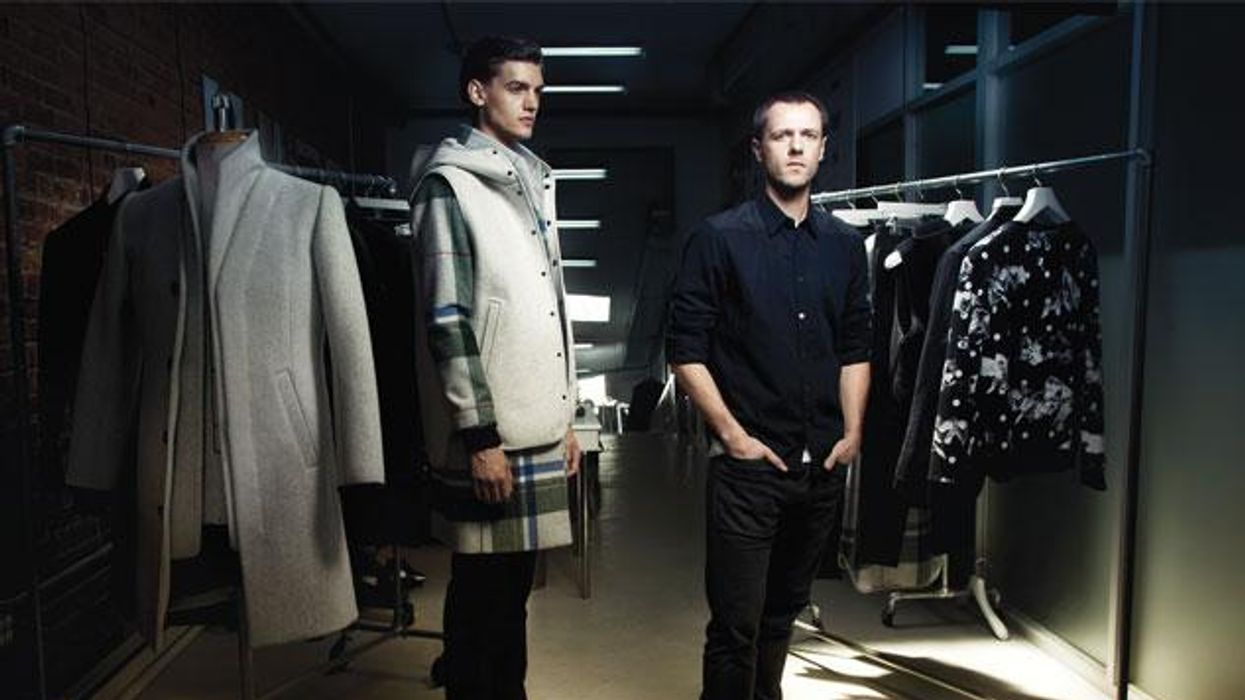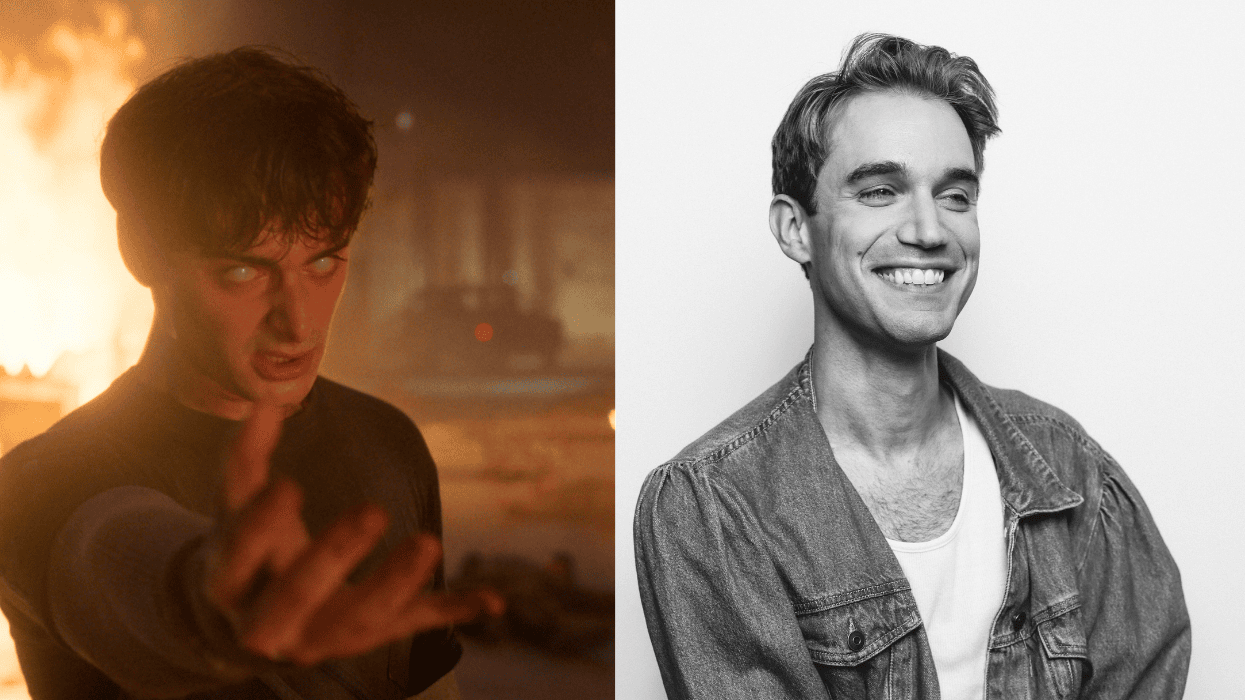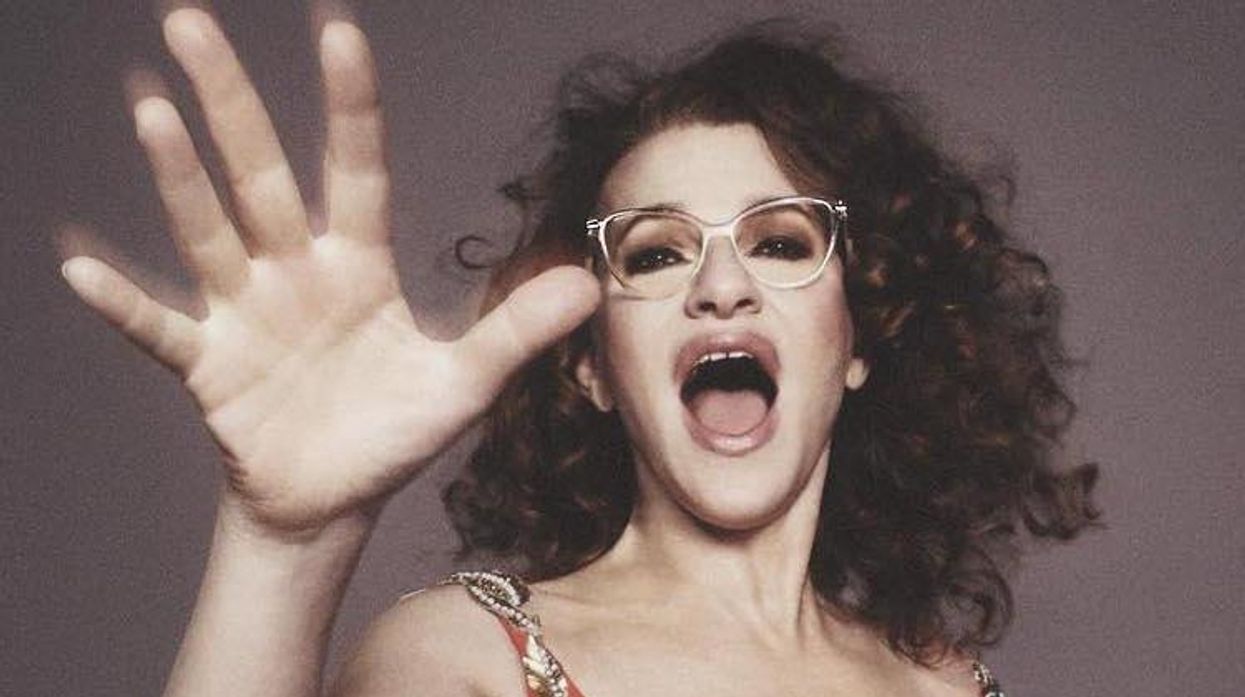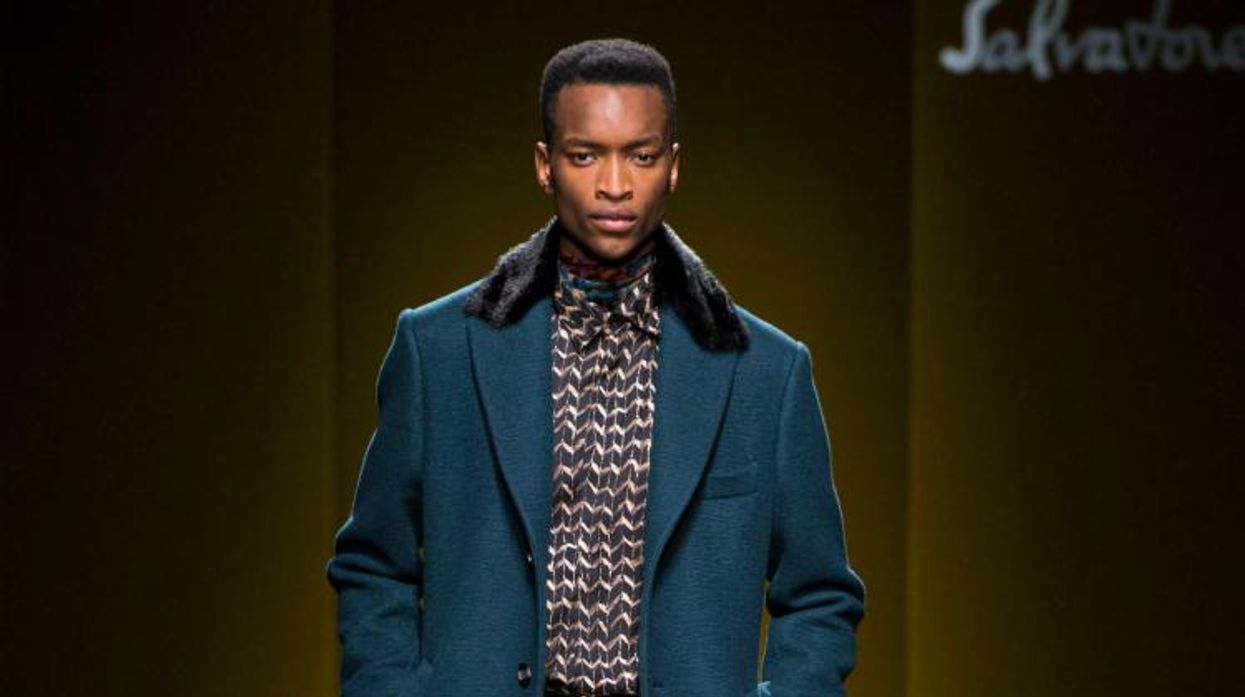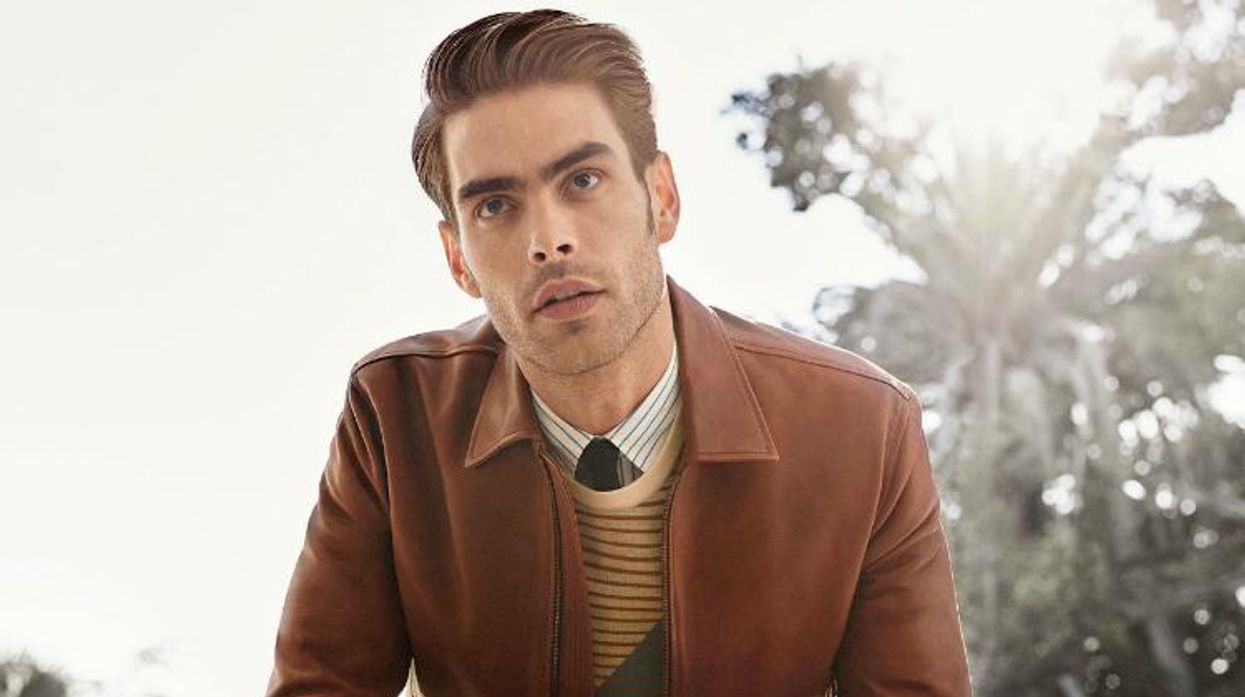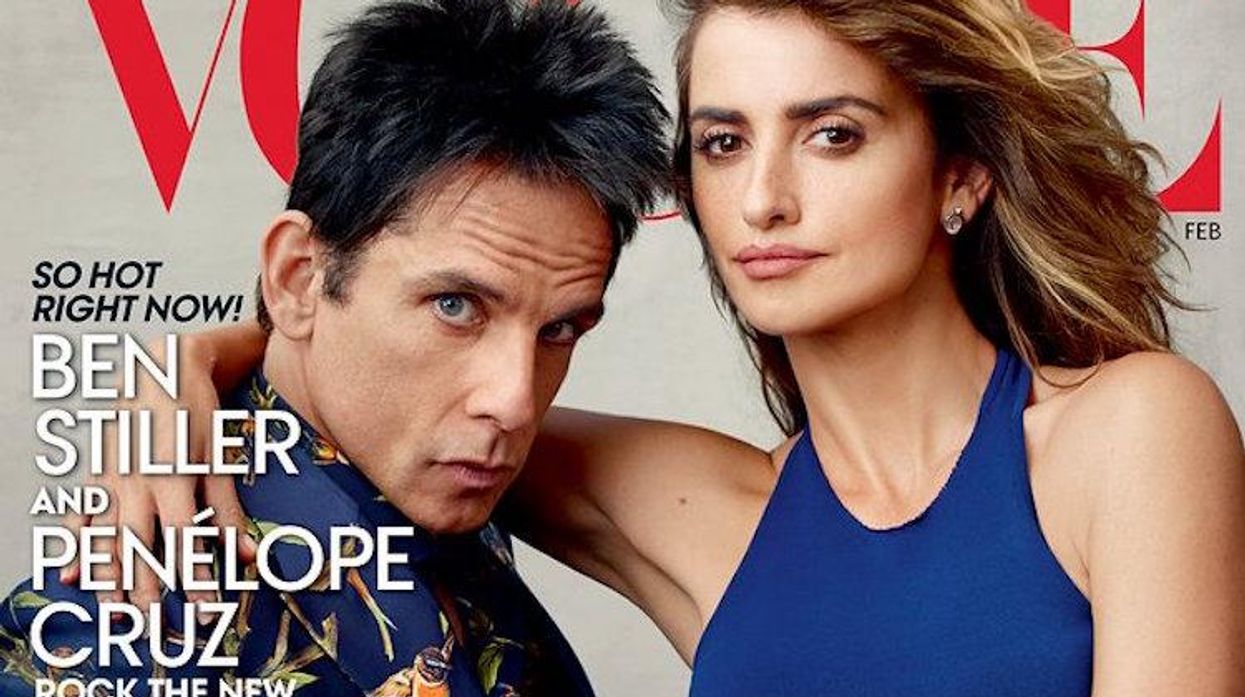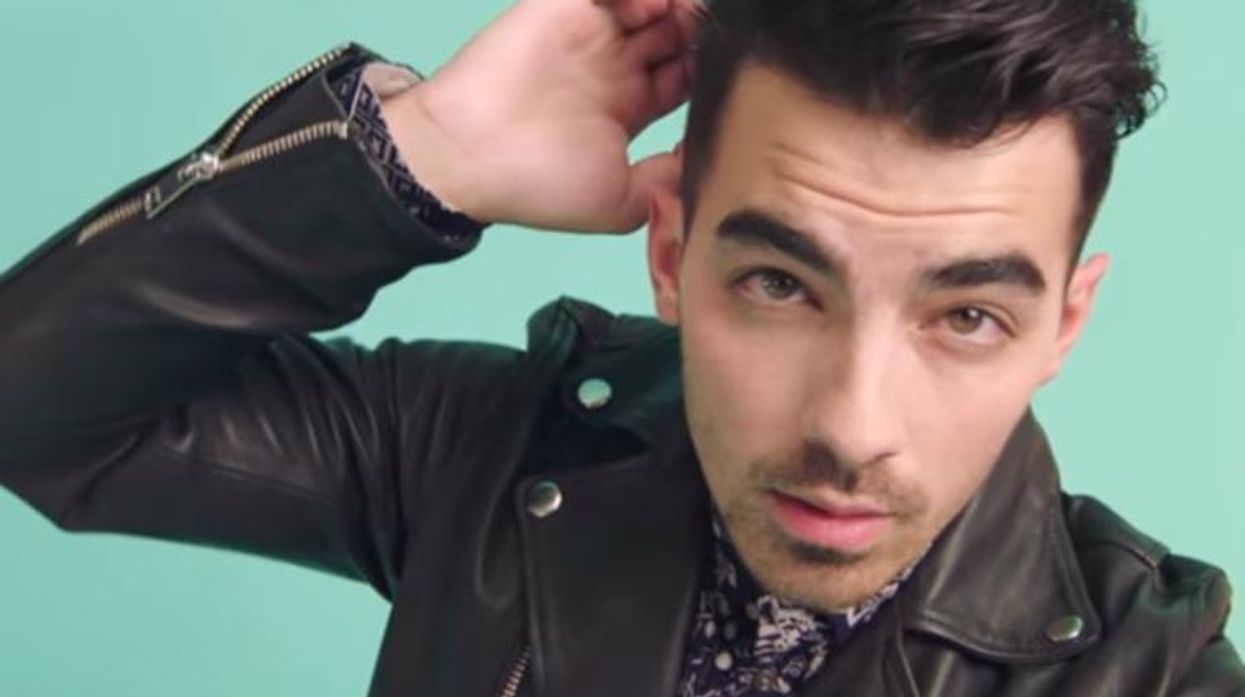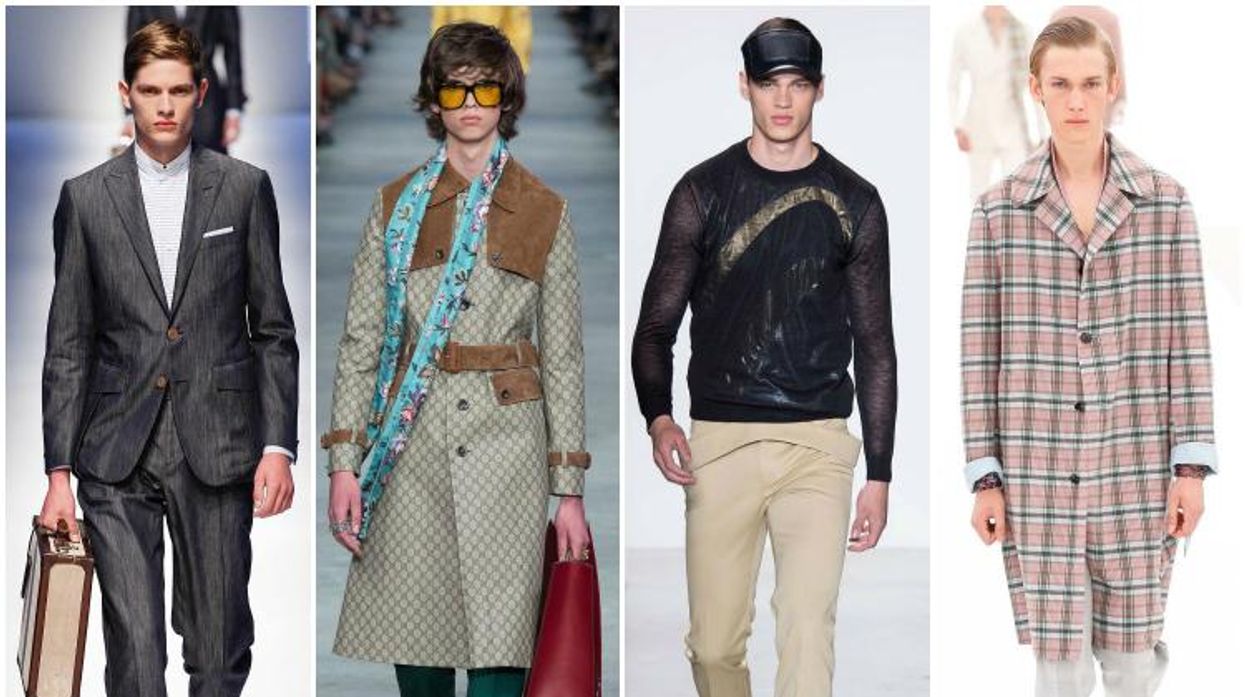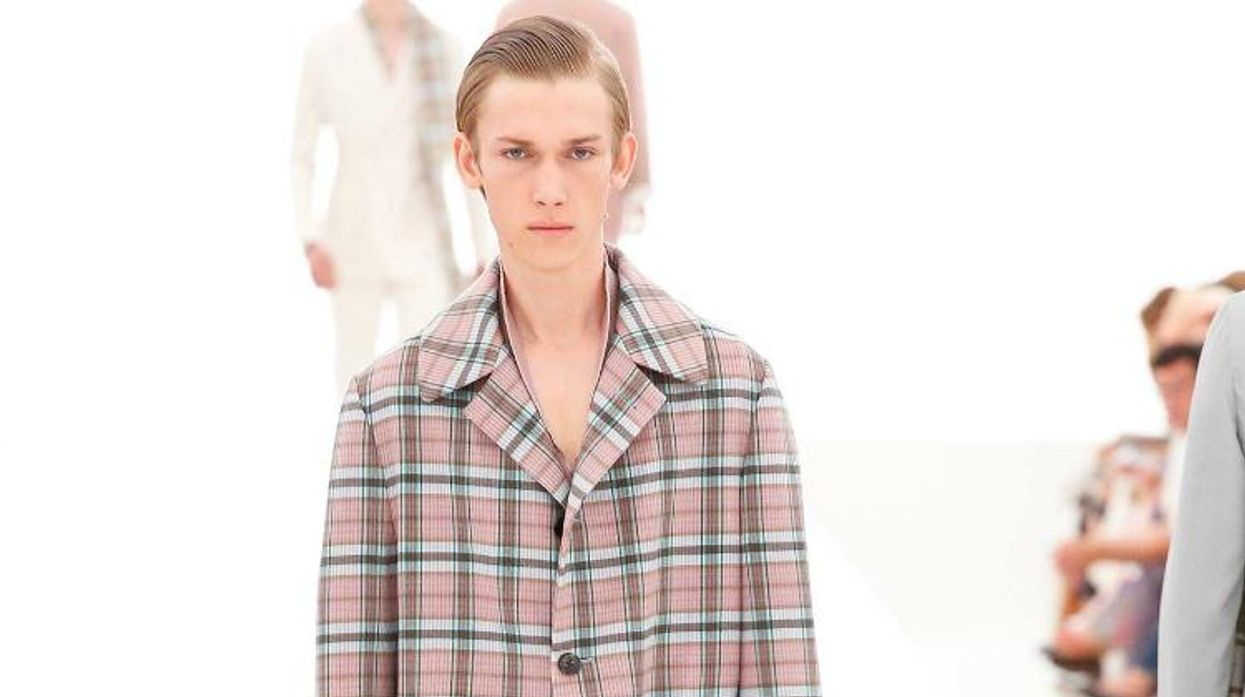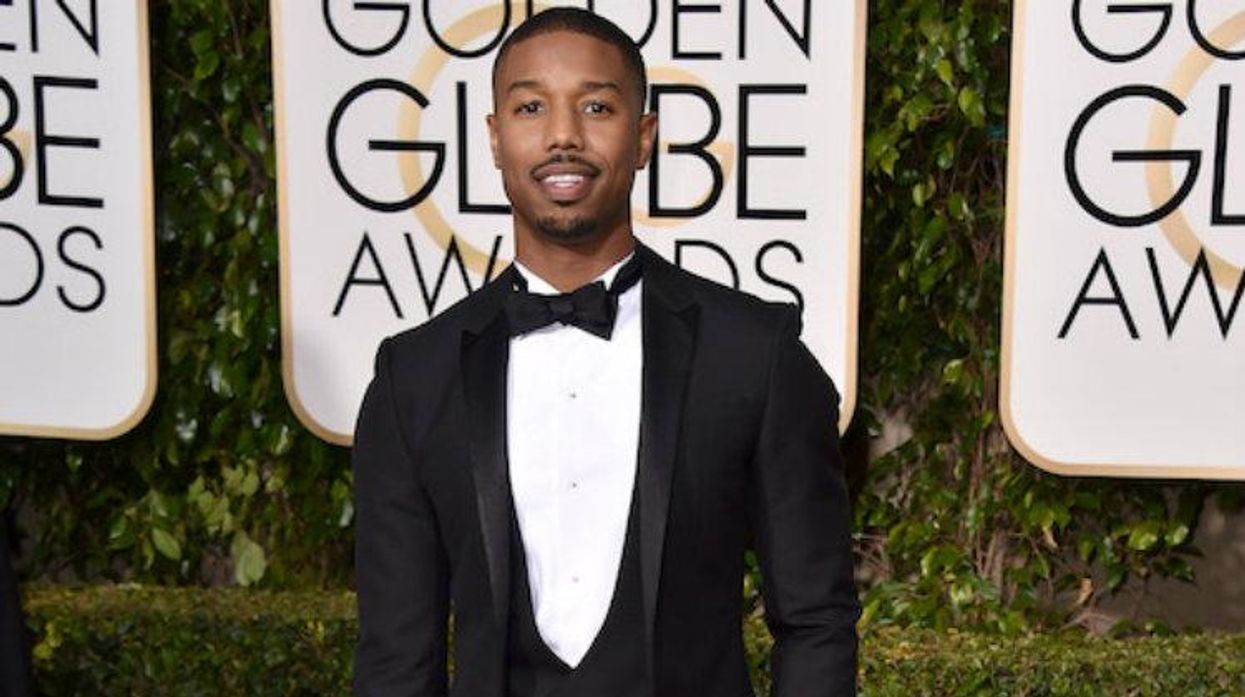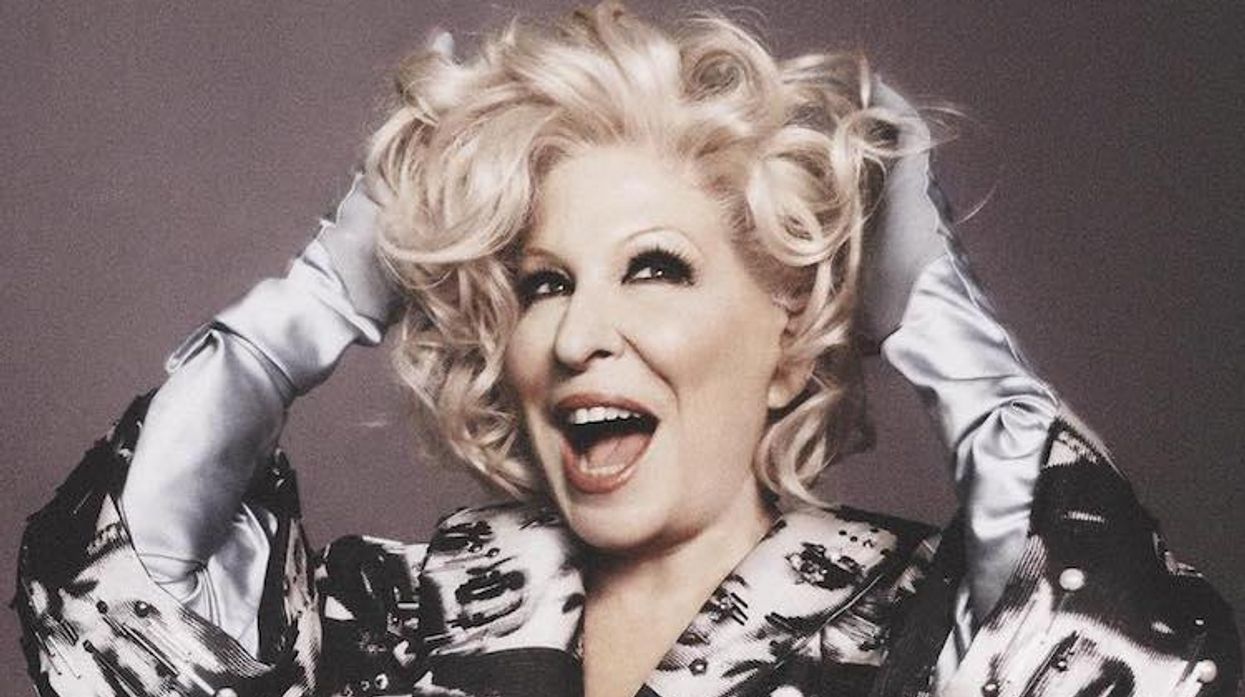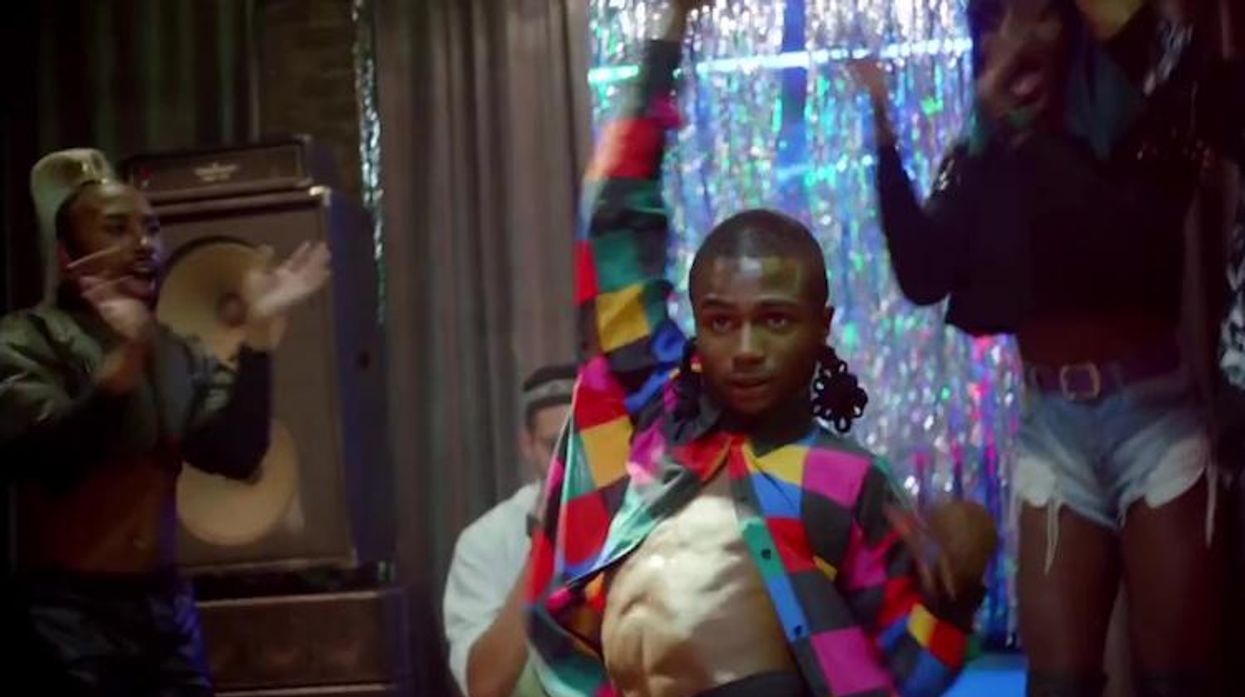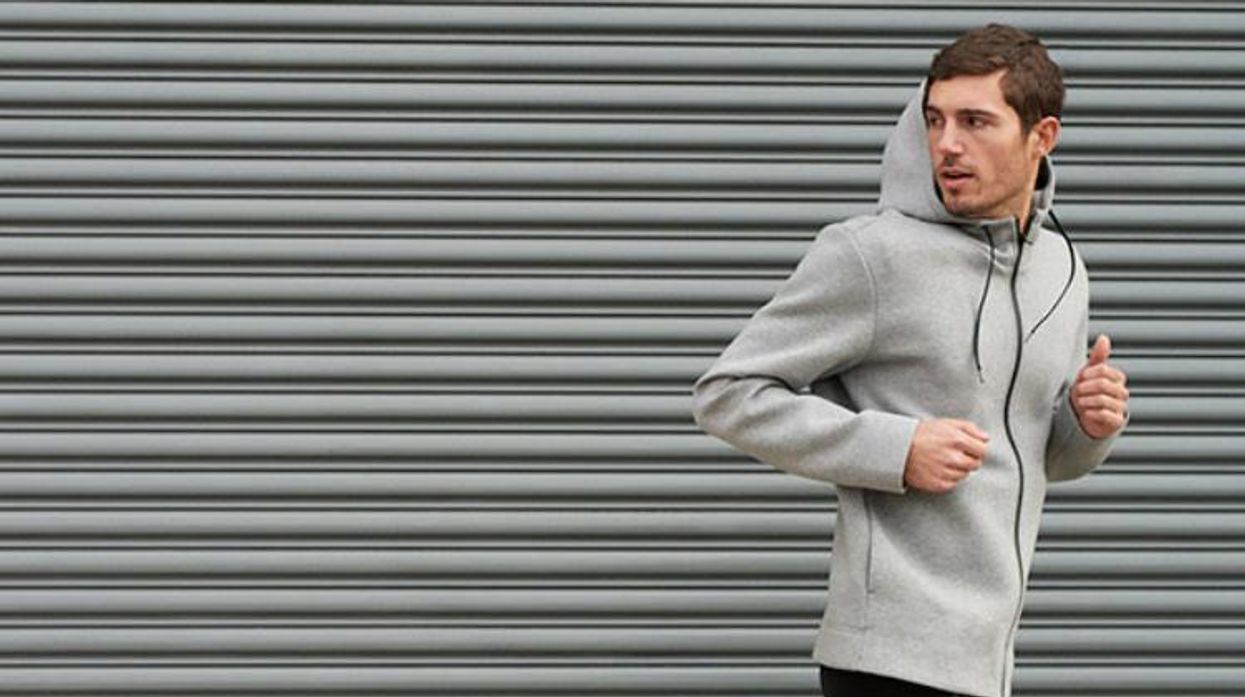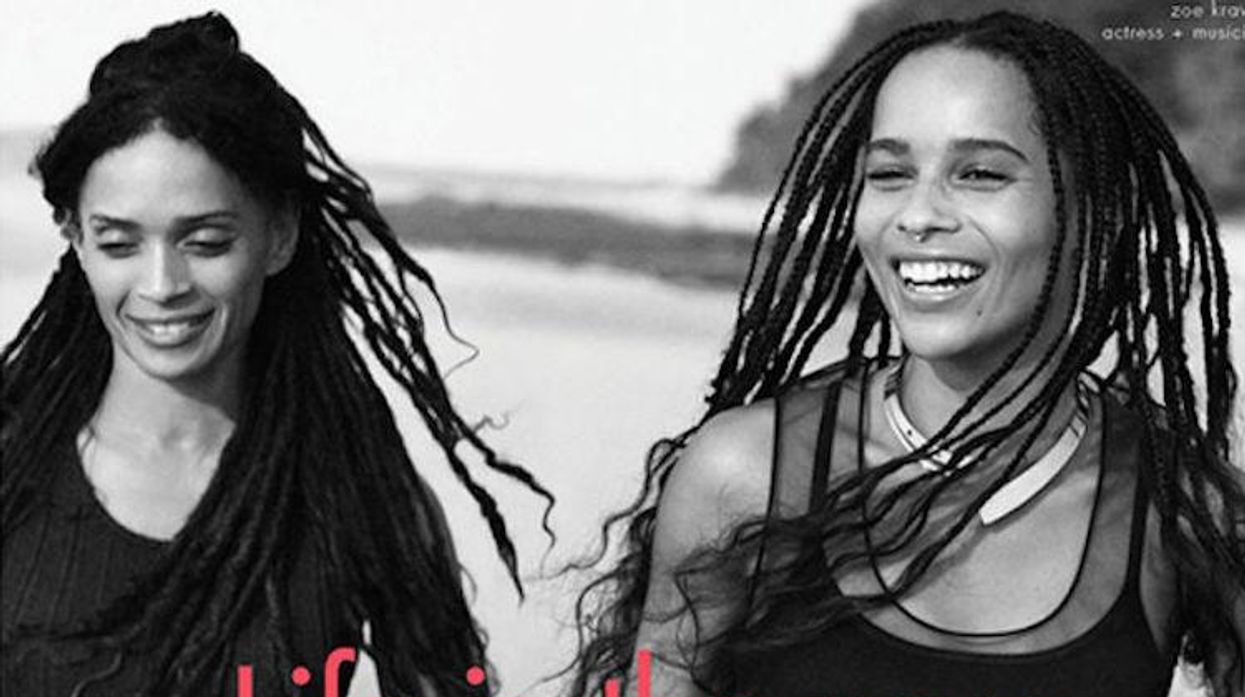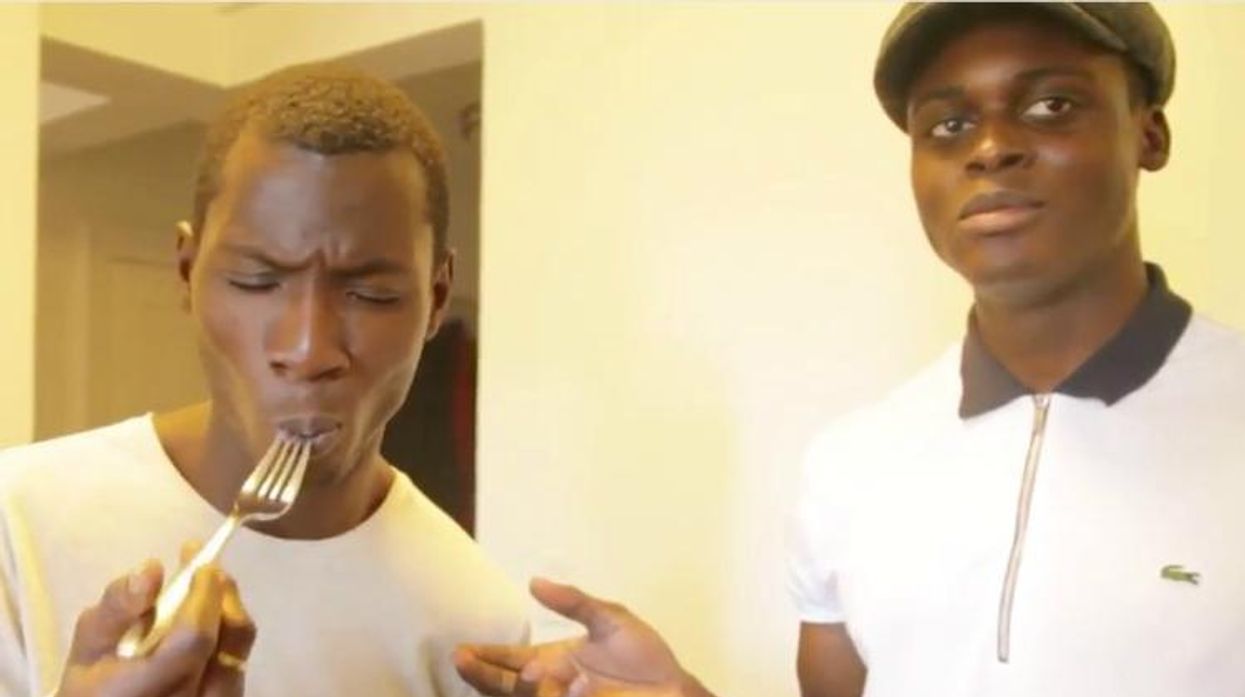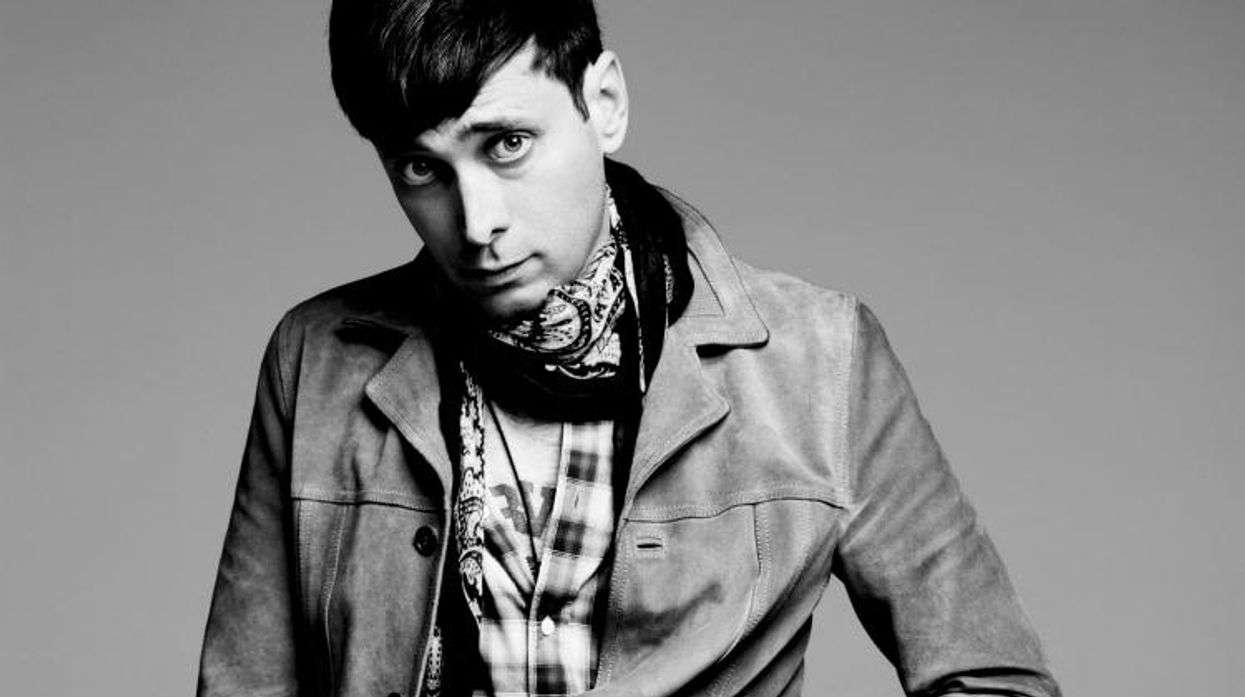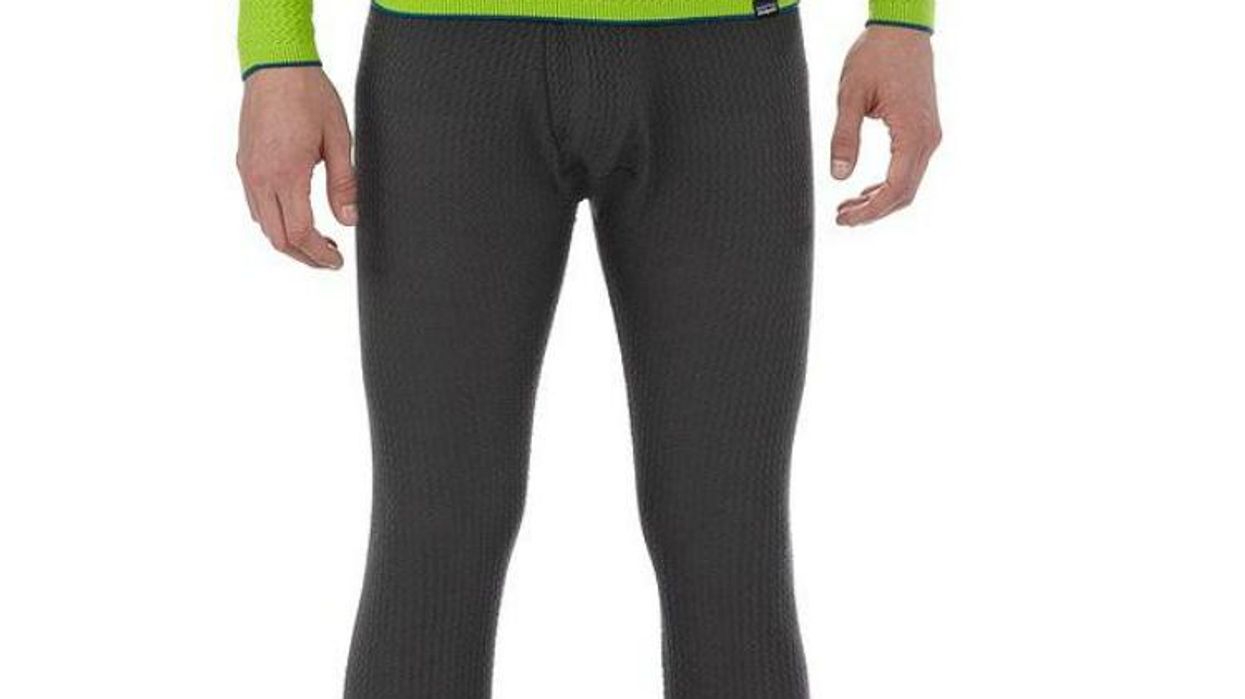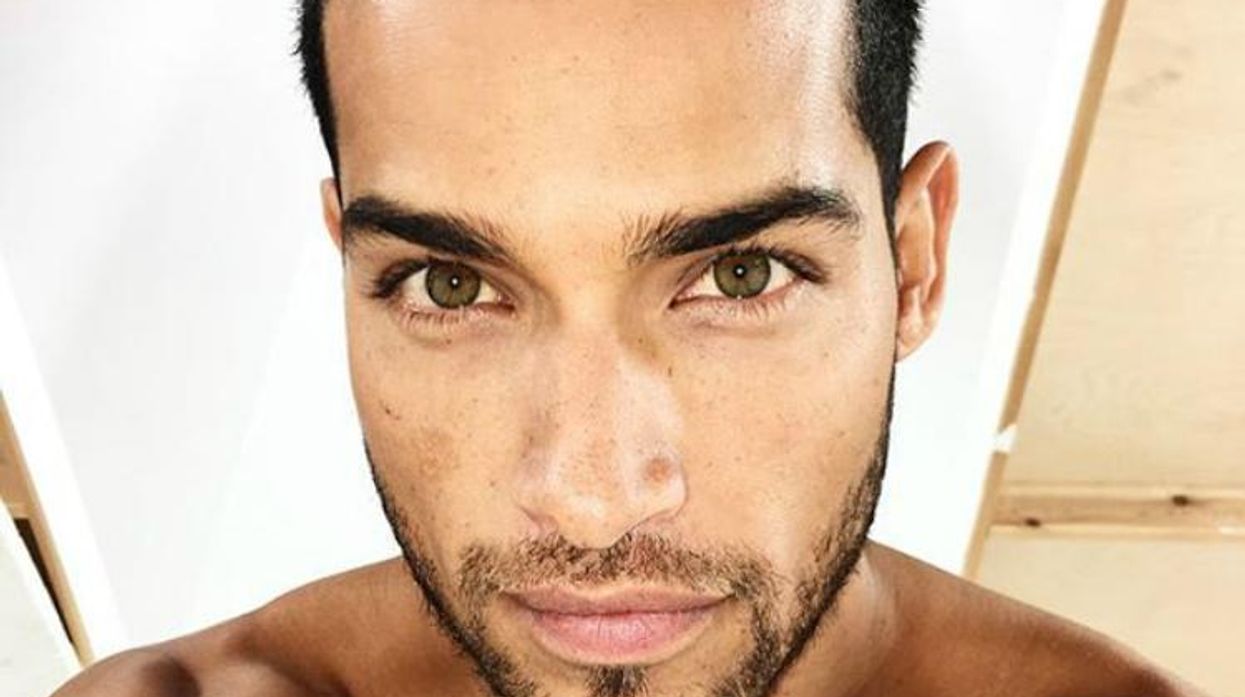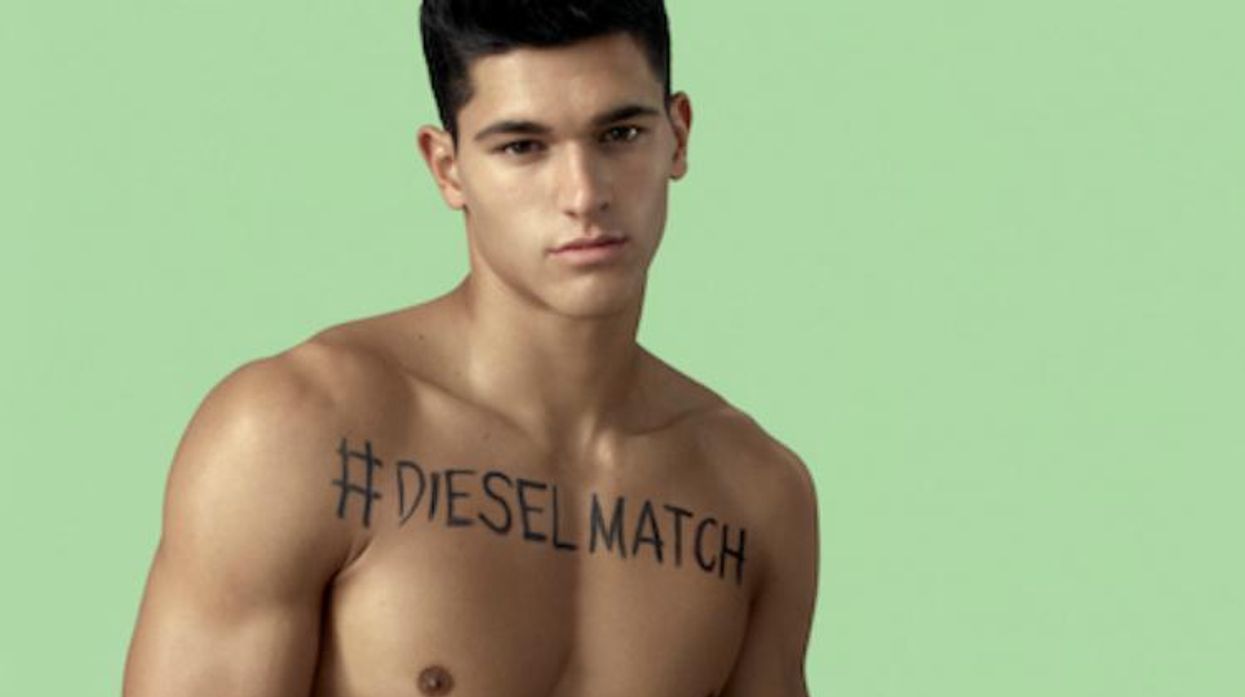Photo by M. Sharkey for Out
Tim Coppens is a fascinating artist. When I arrive backstage at his Men's Week show Wednesday night, I'm immediately struck by the "chill" atmosphere around me. Tall, gangly models lurk everywhere, nodding coolly as I pass.
Tim is something of an enigma in the fashion community. His collections are always exciting, experimental -- often employing previously unheard of textile combinations that give each of his pieces a signature, effortless "coolness." Born in Belgium, Coppens attended the Royal Academy of Fine Arts in Antwerp and continued on to work for activewear labels, including Ralph Lauren and Adidas. After launching his own label, Coppens has been critically praised: He won the CFDA Swarovski Award for Menswear last year and this year is nominated for Menswear Desinger of the Year.
Strolling past racks of clothes with giant, brightly colored mushrooms emblazoned everywhere, I'm greeted by Emily, a smartly dressed woman from Tim's team, who whisks me into the dressing area for a quick talk with the designer about his latest collection. Tim comes across as gentle, unassuming, dressed in a black T-shirt and jeans. You can tell he's an artist truly engrossed in his work, and Emily leads us straight over to the look board so as not to let time get "too distracted."
Out: Could you walk me around the collection, tell me about the inspiration and influence behind it?
Tim Coppens: So this is actually the opening, this Swarovski, the beaded Swarovski. (He points to a gorgeous black-and-orange beaded sweater, the first look in his collection.)
Oh, that's beaded? It's amazing.
TC: Here, it's in a box.
Emily: The collection is called "A Day at the Pool." And the references...
Oh, look at that. That's gorgeous.
TC: There's all sorts of ideas. I start with one idea, and then there's another idea. The start was just, like, a day at the pool.
So you mean just by a pool?
Nothing but water. Just like in Los Angeles, you have the empty pools where kids just skate and hang out. And you know, there's kids, and there's girls, and there's fun...
So were you in L.A.?
No, I was never in L.A. to do that, I wasn't... well, once, but for projects... basically it's the whole vibe. I was, I was skating, you know, it's the group thing. And just doing... hanging around. And that comes with the music, that comes with graffiti, that comes with all the things that you do when you're like, what age? 18? 16? You know, but then the brand much older than 16, 18, but it's still very much a part of who I am, what shaped me, and I just very much want to communicate that.
So you were a skater when you were younger?
I hate that people say, "You were a skater?" I was part of that I guess, that group, so we skated every day. For like, 10 years. Because it's part of me. I mean, and you go somewhere, and you take your skateboard, like the first time you go to a city, you take that, with your friends, and it's a big part of, like, discovering the city. And you meet people there, that are also doing that. It's a community. And it's a worldwide community. It's a common language. That is how I discovered cities, and got to know people, and music. And all that sort of stuff.
You mentioned music, who are you listening to right now?
In the studio there's like two albums. We have the new A$AP album, there's, ah, Jamie XX, which is playing. There's also jazz. Molly jazz? Like, '70s? There's all these bands that play, like, Ethiopian jazz, and you'll hear it in the thing as well. They have these masks, rabbit-shaped. And they have jewelry like that. I've always been drawn to that because it's interesting, it's beautiful, and I guess also there's a reason why they do it. It's not just to be funny. It's very serious. And those kind of, like, symbols, I guess, I try to use...
Like what?
I don't know... mushrooms, that are magic. That are dripping. It's not just like a mushroom. It's a magic mushroom, and it's a good thing.
I looked at the models that way, when we cast them, it was very much how they look, but also how they walk, how they talk, and how they look as regular guys. And the clothes they wear. And how they are. Some of them have done the shows, but there's also kids that haven't really done anything, they're just, you know, they're just hanging out, they're from New York... and they don't give a shit. But they're really cool. And that's kind of the affect that I wanted to achieve. Which is not easy when you do a fashion show.
Let's talk about menswear in general. This is the first Men's fashion week in New York. Do you want to talk about where you think menswear is heading, and how it's changing?
I don't know where it's heading. I think it's heading different directions. I think there's more freedom. And so a lot of people are doing different kinds of things. I think the good thing is that I'm based in New York, so I don't see myself as a traditional New York designer. I'm from a generation that came to New York with a purpose to discover the city, with what I talked about before. To be part of that group. And to experience the city, the music, all that kind of stuff. And what I'm doing there is very much part of that. And I think the way people in Europe perceive, have perceived American design, is very classic, very traditional. And so doing shows here, and being based in this city, makes total sense for me, because it is part of the DNA of the brand. And for me, it kind of makes more sense doing it here than in Paris, where I have less of that link to the city.
There's a connection to the city, to the energy of the city. How your own personal style exists in relation to your collections? Is it similar? Do you wear what you make?
Yeah, but I mean, there's one look, maybe, with the green jacket, and the black pant, that I would wear. I would wear the T-shirts, and the jeans, or whatever, so when you go on a catwalk, it becomes a story.
And you're experimenting, trying new ideas.
Of course. I think that's very important. Not everything is wearable. It doesn't have to be. It's to communicate a concept. You don't want to communicate, "Oh, this is just all stuff that can go straight to the stores." When the stores come and make their selections, it works a lot differently. Some of it is more conceptual than ready to wear.
I'm so excited to see the show. Do you have any advice for young designers?
Don't start too young. Unless you want to do that.


